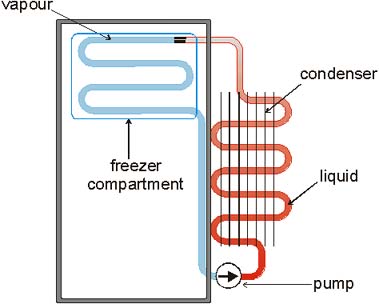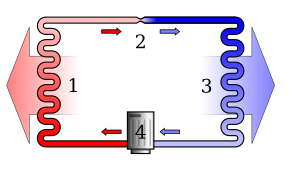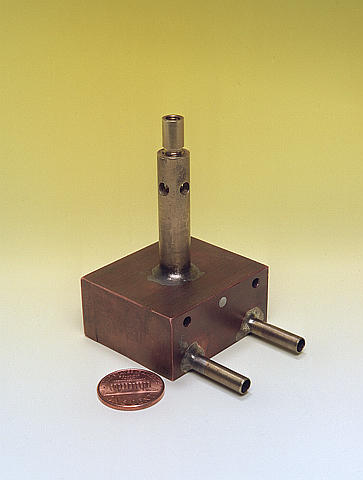So we have you house super insulated, we have a tankles water heater, and you have turned your refrigerator upside down and moved the coils outside (more on that tomorrow), what do we get next? Most people would say an efficient “something” to cook on but me I gotta have my TV! While I am doing the research on all that other silly stuff I can watch CSI.
http://www.treehugger.com/files/2006/05/top_energy_effi.php
Shopping for an energy efficient television set can be difficult. You can scan the manufacturers’ specs, but many don’t provide power information, and the numbers provided rarely include standby power ratings. Depending on what type of set you buy, a television can consume as little as 45 watts or as much as 500 watts, and cost anywhere from $13 to $145 per year to run.
Basically, TVs that use the least amount of electricity are smaller LCD TVs, and the biggest energy consumers are the 50+ inch plasma sets. The most efficient LCD televisions are generally those in the Sharp Aquos line. Last year, CNET tested the energy efficiency of 20 television sets, and the Sharp Aquos LC-20B8U-S 20 inch set was found to be the least power hungry — it costs just $13 a year to run. Rear-projection TVs are also technically energy efficient, but these sets are large and rarely get as bright as the others.
:}
These people do a bang up job of laying out the cost for 80 different Television sets. All HDTV because in February we all have to switch over.
http://reviews.cnet.com/4520-6475_7-6400401-2.html?tag=nav
The price of energy always seems to be rising, and costs can run high when just about every modern appliance can be seen as a power-hungry mass of circuits, lights, and buttons that sucks down electricity, day and night. We put 104 TVs–old and new–to the test by measuring how much power each uses in a simulation of actual use. Our results, detailed in a chart on the next page, show that it can cost between $29 and $223 a year to watch TV, depending primarily on screen size and technology type.
Technology and size matter
There are four basic technologies that TVs use to produce a picture, and technology type has a large influence on power consumption per inch of screen. The traditional cathode-ray tube (CRT) blasts electrons onto chemical phosphors embedded on the inside of the tube, while plasma sets ionize gas to create colors in a million or more tiny pixel cells. SpongeBob or American Idol then show up on the other side of the glass, and both require more electricity to create a brighter image.
Power consumption compared
TVs:
Average plasma: 350 watts
Average rear-projection: 212 watts
Average LCD: 213 watts
Other A/V gear:
PlayStation 3: 197 watts
Xbox360: 187 watts
Average PC: 78 watts
DirecTV HR20 DVR: 33 watts
Wii: 19 watts
Slingbox: 9 watts
Wireless router: 7 watts
On the other hand, flat-panel LCDs and rear-projection microdisplays use a powerful fluorescent backlight or bulb that either punches through an LCD panel with its three color filters or that reflects off of a digital-light-processing chip that has a million miniature mirrors and a spinning color wheel. Either way, they consume the same power, regardless of the brightness of the image. That’s because the primary light source–the backlight or the bulb–is essentially always running at maximum power. Note that many flat LCDs actually have adjustable backlights that you can turn down to consume less power and produce a dimmer image.
Size matters as well, so we divided each set’s power use by its screen area to get a watts-per-square-inch rating. This way, small and large screens can be compared. While there are plenty of exceptions, the average score of each technology type is telling:
- Microdisplay rear projector: 0.14 watt per square inch
- LCD: 0.29 watt per square inch
- Plasma: 0.35 watt per square inch
If power efficiency is all you’re after, the clear choice is rear-projection technology.
:}
This is a really long very well written article and tests of more than 80 TV’s. Please read it and click on every commercial you see because these folks are the best! One more quote because it makes an important point. Many electronics consume power whether they are on or off. The worst is the chargers because people leave them plugged in and they draw power constantly. Then we will reveal the winner of the cheapest TV to operate contest.
:}
Other power factors
It may surprise you to hear that TVs use power even when they’re not turned on. So that the TV is ready to respond to the remote in an instant, all sets use what’s called phantom or standby power. Our tests revealed that standby power consumption varied widely among different TVs. In most cases, it’s just a few watts, but we found several TVs that used more than 10 watts in standby. In any case, it adds up.
Few people have just a TV anymore, and all sorts of ancillary devices contribute to your yearly energy costs as well. Think of all that’s plugged into your set, from a DVD player, an A/V receiver, and a gaming console to a satellite receiver, a digital recorder, and even a Wi-Fi transmitter. They all need power. It may not sound like much, but a DirecTV DVR can use about 33 watts, while a Slingbox draws about 9 watts–and these are devices that are typically always on. All told, these boxes can use more power than the TV itself, especially when it comes to gaming. The Xbox 360 pulls down an impressive 187 watts, but is outdone by the power-hungry PlayStation 3, which requires 197 watts of juice
:}
AND THE WINNERS ARE:
Envision A27W221
For absolute cheapest
And:
For Quality
www.energystar.gov/index.cfm?fuseaction=find_
www.associatedcontent.com/article/
http://familycorruptioninthebigeasy.blogspot.com/2008/01/looking-for-energy-efficient-tv.html
www.tech.yahoo.com/blog/raskin/6816
:}
:}













